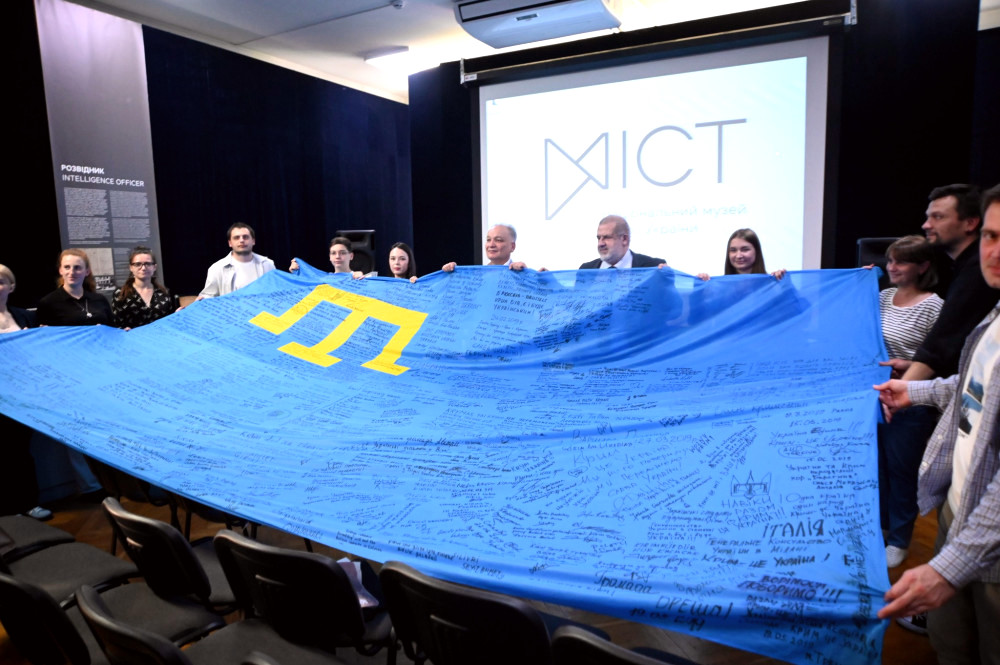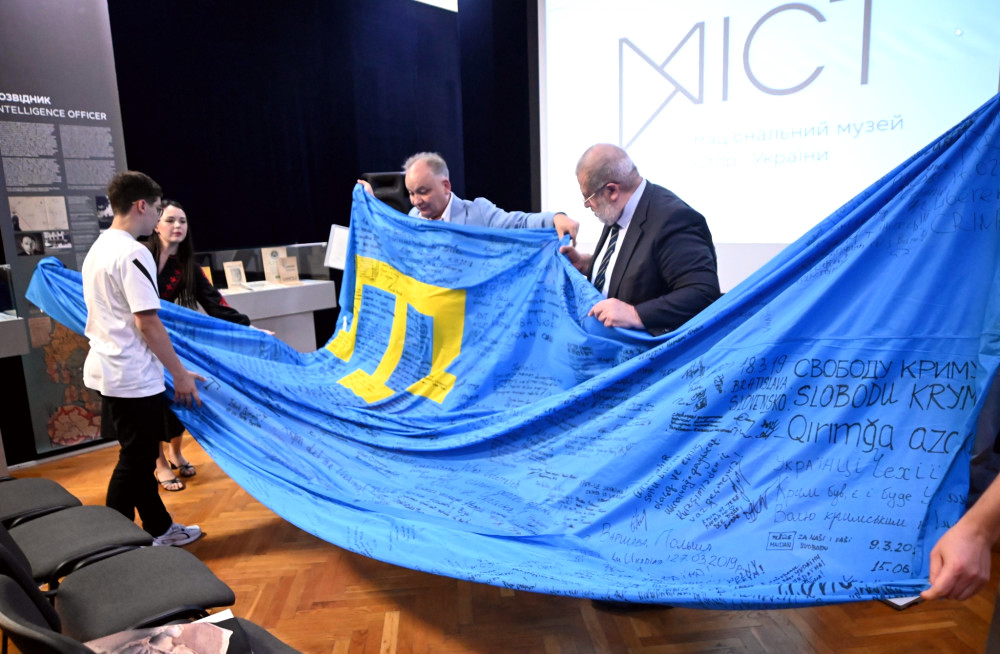A significant historical artifact is set to enhance the collection of the National Museum of History of Ukraine.
On June 30, the National Museum of History of Ukraine hosted a ceremonial handover of the Crimean Tatar flag, which has become a symbol of international solidarity in the struggle for the deoccupation of Crimea.
According to the NMIU, the ceremony took place on the anniversary of the II Kurultai of the Crimean Tatar people, which 34 years ago adopted a resolution on the national flag, anthem, and the establishment of the Mejlis.
For nine months, the Crimean Tatar flag traveled the globe as part of the international campaign “United by the Flag – #LIBERATECRIMEA,” visiting 28 countries across four continents. The flag bears hundreds of signatures from participants worldwide, expressing support for the Crimean Tatar people and the demand for Crimea's liberation.
The event was attended by the Head and members of the Mejlis of the Crimean Tatar people, the team from the Crimean Tatar Resource Center, and museum staff.
“This is very significant, as the transfer of the national flag of the Crimean Tatars to the National Museum of Ukraine allows us to leave important artifacts of historical events for future generations. It will continually affirm that Crimea is Ukraine. The Crimean Tatar flag is a symbol of the struggle not only for the rights of the indigenous people but also for the territorial integrity and sovereignty of Ukraine,” said Eskender Bariyev, Chairman of the Board of the Crimean Tatar Resource Center.
Refat Chubarov, Head of the Mejlis of the Crimean Tatar people, emphasized: “This exhibit is a testament to history, struggle, and solidarity. After the liberation of Crimea, our museums must tell the stories of the heroes and events that brought freedom closer. Such additions to museum collections will leave a material trace that enables future generations to understand our current history.”
Anton Bohdalov, head of the department of modern Ukrainian history, stressed the importance of incorporating this unique artifact into the museum's collection as a symbol of resistance and international solidarity. “The flag being handed over to our museum today is evidence of an ongoing struggle,” he noted.


